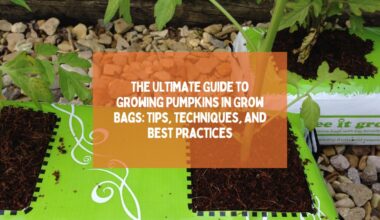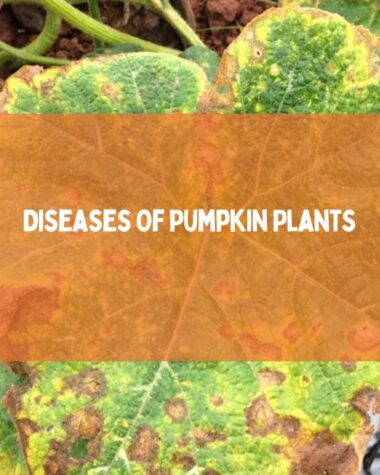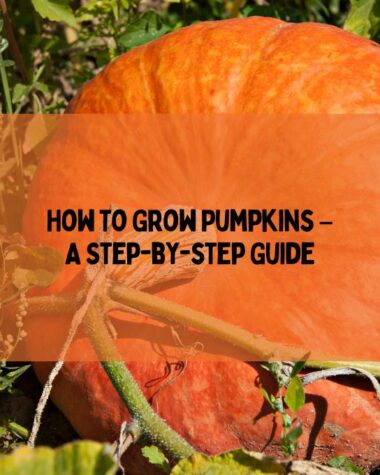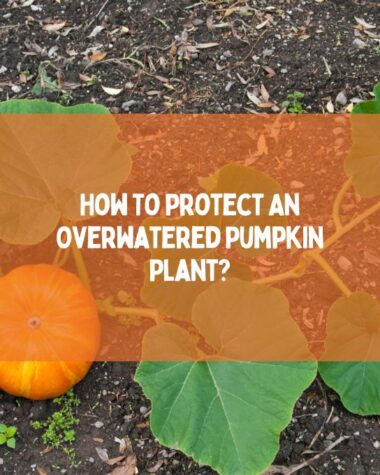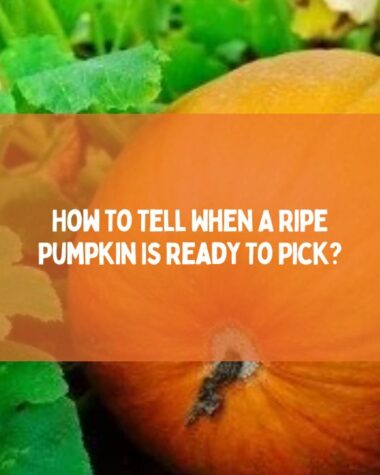Pumpkins are winter squashes and are often associated with the fall season. Their plant is also surprisingly easy to manage. Pumpkins are not merely for carving or ornamental displays. They are also used in a variety of culinary applications, such as making pies, soups, and roasted pumpkin dishes.
They hold a lot of nutritional significance, and watching them grow day by day is oddly satisfying. Pumpkins are a good source of vitamins A and C, as well as potassium and fiber.
In this article, we are going to cover the 8 stages of growing pumpkins, their tips, and tricks for enjoying a home-grown gourd from your garden to your plate.
Let’s start.
8 Stages of Growing Pumpkins
Pumpkins go through a series of stages, starting with the seeds sprouting and ending with the pumpkins being picked and dried. These stages and their timings might vary according to the variety of the gourds, but the general stages are the same for every type.
There are many varieties of gourds, from miniature ones to giant ones. It all comes down to one factor: how much space do you have? Once you know the answer to this, it’s time to plant your gourd.
1. Planting your seeds
You can buy pumpkin seeds from a local store, or you can also save seeds from any pumpkin you eat. Just clean their seeds properly before sowing them. The first stage of growing pumpkins is planting seeds.
Pumpkins are warm-season plants, so they need to be planted after the danger of frost has passed and the soil has warmed up to the temperature of at least 65 °F (15.5 °C). Plant the seeds about 1 inch (2.5 cm) deep, and space them about 2-3 feet (60–90 cm) apart.
Pumpkins grow best in soil that is rich in nutrients and has good drainage. Choose a sunny location in your garden that receives at least 6 hours of direct sunlight each day. The soil should be loose, well-draining, and have a pH between 6.0 and 6.8.
Related Reading
- Secret Tips To Grow Pumpkins From Seeds
- How To Keep Bugs Off Pumpkin Plants?
- How To Grow Pumpkins – A Step-by-step Guide
2. Germination Of Seeds
Pumpkin plant germination typically takes about 5 to 10 days, depending on the temperature and moisture conditions.
During germination, the seed coat softens, and the embryo inside the seed begins to grow, sending out a root and a shoot. The root grows downward into the soil, while the shoot grows upward toward the surface.
Once the shoot emerges from the soil, the first leaves, called cotyledons, appear. These are usually large and round and are part of the seed itself. The true leaves, which are smaller and more pointed, will emerge a few days later.
Once the pumpkin seed has germinated and the seedling is growing, it’s important to continue to provide the plant with adequate water and nutrients to ensure healthy growth.
3. Vegetative growth
During the vegetative growth stage of a pumpkin plant, the plant focuses on developing its foliage, stems, and roots. The plant will produce more leaves and stem length, as well as an extensive root system that will support its overall growth.
Throughout this stage, the pumpkin plant requires sufficient amounts of water, nutrients, and sunlight to thrive. In the course of the vegetative growth stage, the pumpkin plant is vulnerable to pest and disease damage.
4. Vine growth
Vine growth is an important stage in the life cycle of a pumpkin plant, and it refers to the period when the plant produces long, trailing stems that will eventually produce pumpkins. The vines have long, slender stems that grow outward from the base of the plant, often reaching several feet in length.
During this stage, the vines will need support as they grow, so it’s a good idea to provide trellises, stakes, or other supports to keep them off the ground and prevent damage or disease.
The vine growth stage typically lasts for several weeks to a couple of months, depending on the variety of pumpkins and the growing conditions.
5. Flowering Stage Of Pumpkin
The flowering stage of a pumpkin plant is critical to its development, as it is during this time that the plant produces the flowers that will eventually lead to the production of pumpkins. Pumpkin plants typically begin to flower about six to eight weeks after they have been planted.
The exact timing may vary depending on the variety of pumpkins and the growing conditions. Pumpkin plants produce separate male and female flowers. The male flowers appear first and are typically smaller and less showy than the female flowers.
The female flowers have a small, bulbous structure at the base of the flower, which is the ovary that will eventually produce the pumpkin.
6. Flower Pollination
Male pumpkin flowers produce large amounts of pollen, which is necessary for pollination. The pollen is contained in the anthers, which are the yellow structures located in the center of the male flower.
The pollen is transferred from the anthers of the male flower to the stigma of the female flower. This can happen through the wind or by insects, such as bees, butterflies, and other pollinators.
In some cases, gardeners may need to manually pollinate pumpkin flowers to make sure they provide proper fertilization. This can be done by using a small brush or cotton swab to transfer pollen from the male flower to the female flower.
Once the pollen reaches the stigma of the female flower, it begins to grow down the style and into the ovary, where it fertilizes the egg cells and allows the pumpkin to begin to develop.
7. Fruit development
During the fruit development stage of growing pumpkins, the plant undergoes three main phases.
- First, pollination and fertilization occur, leading to the development of the ovules into seeds and the ovary into a fruit.
- Second, cell division and enlargement take place, causing the pumpkin to increase in size rapidly, stimulated by the plant hormone auxin.
- Finally, the fruit undergoes ripening, characterized by biochemical changes that cause the flesh to become firmer and the skin to change color from green to orange or yellow.
Once fully ripened, the pumpkin can be harvested and used for various purposes.
8. Harvesting and curing
Once the fruit has fully ripened, it is ready for harvest. To harvest the pumpkin, cut the fruit from the vine, leaving a few inches of stem attached. After harvesting, the pumpkins should be cured to warrant their longevity.
To cure the pumpkins, store them in a warm, dry area with good air circulation for approximately two weeks. During the healing process, the skin will harden, and any minor cuts or bruises will heal.
Once the pumpkins are fully cured, store them in a cool, dry place, ideally at a temperature between 50 and 55°F with a relative humidity of 50- to 5%. Properly cured and stored pumpkins can last up to several months, making them available for use throughout the fall and winter months.
Related Reading
- How To Clone Tomato Plants From Cuttings?
- Carrots For Butterflies: How To Attract Black Swallowtails To Your Garden?
- Eggplant Companion Plant Gardening: Tips And Tricks For A Bountiful Harvest
Conclusion
We often overlook this incredible fruit because of the space it requires to grow, but once you get used to growing them, you will know that they do not take up too much space when you manage them accordingly.
Growing pumpkin plants can provide a sense of accomplishment as the fruit develops from a small seed into a large, mature fruit ready for harvest. Pumpkin plants are beneficial to the environment.
They are known to attract bees, which are vital for pollination and help to promote biodiversity. Pumpkins are also a food source, and the seeds can be roasted and consumed as a nutritious snack.
Thank you for reading.
